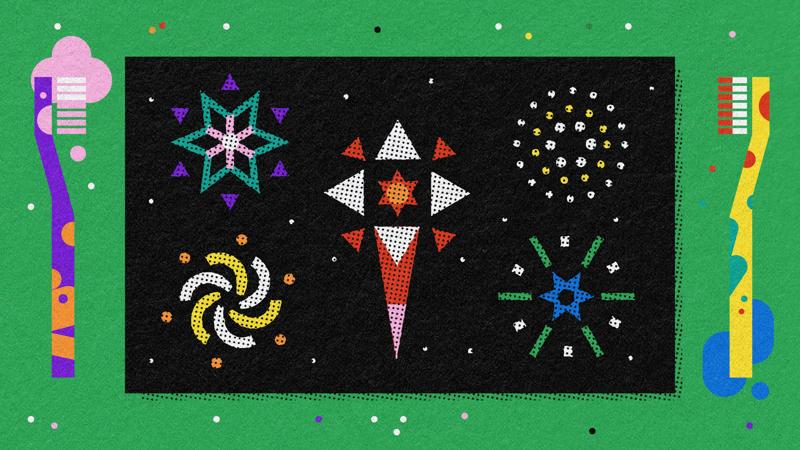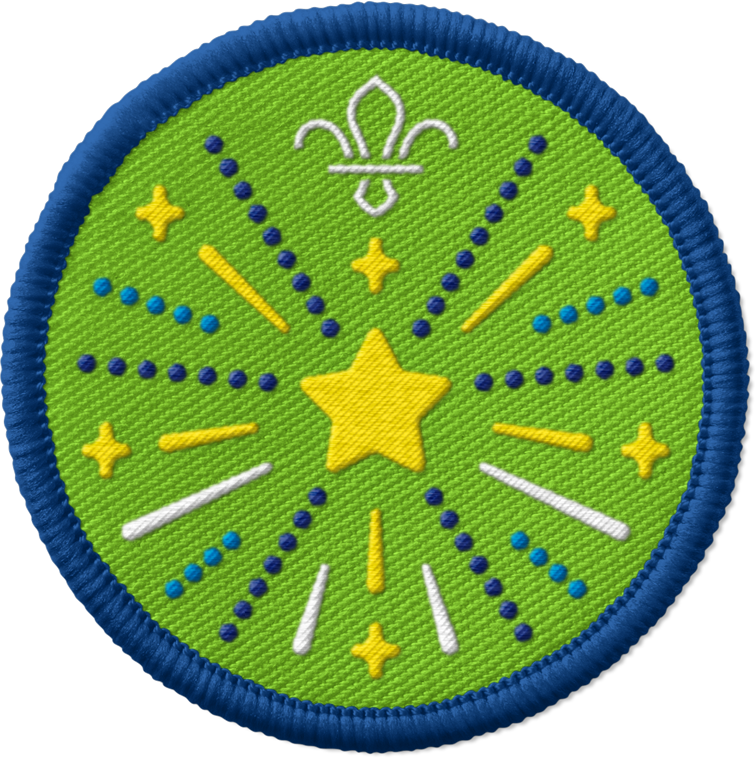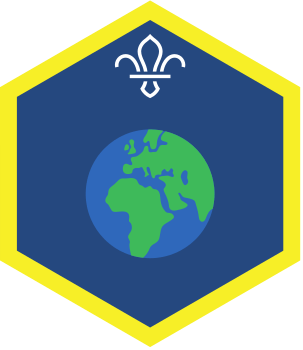
Paint fireworks with a flick
You’ll need
- Black card
- Old, clean toothbrushes
- Neon or bright coloured paint
- Containers
- Tables
Before you begin
- Use the safety checklist to help you plan and risk assess your activity. Additional help to carry out your risk assessment, including examples can be found here. Don’t forget to make sure all young people and adults involved in the activity know how to take part safely.
- Make sure you’ll have enough adult helpers. You may need some parents and carers to help if you’re short on helpers.
Planning this activity
- Put a small amount of paint into the containers and place them onto the table with the rest of the equipment.
- Make sure clothing and the surround is protected, and keep paint away from eyes.
Fireworks as part of celebrations
- Gather everyone in a circle.
- There are lots of celebrations that use fireworks. Ask if anyone can think of one. Some suggestions might be Diwali, Bonfire Night or New Year’s Eve.
- You could chat about these events, how they’re celebrated, why fireworks are used and why these events are celebrated.
Making art with a bang
- Before making the art, gather everyone together. Explain to everyone that they’re going to be creating a firework picture. They’ll by flicking the brightly coloured paint onto the card using the tooth brushes.
- Give everyone a piece of black card.
- They should dip the toothbrush into the paint, then hold the toothbrush above the card. They should use their finger to pull the bristles back and flick the paint onto the card. They could also hold the toothbrush loosely in one hand and flick their wrist/hand to splatter the paint onto the card.
- If anyone feels uncomfortable touching or flicking the paint, they could push the toothbrush head flat onto the paper instead, so the bristles spread out.
- Let everyone get creative and make their pictures.
- Once the pictures are finished, put them to one side to dry.
Diwali, also known as Deepavali, is a festival of lights. It's celebrated by Hindus, Sikhs, Jains and some Buddhists across the world.
The customary greeting associated with Diwali is ‘Shubh Deepavali’, which means ‘Happy Diwali’.
It's the largest and most celebrated festival in India, and is widely celebrated across the world, including in the UK.
Diwali is around October or November and lasts around 5 days.
The word Diwali means 'rows of lighted lamps'.
Diwali's known as the 'festival of lights' because houses, shops and public places are decorated with small oil lamps called 'diyas'.
It signifies the victory of good over evil, light over darkness and knowledge over ignorance.
Originally a Hindu festival, Diwali's also celebrated by Jains, Sikhs and some Buddhists. Each religion marks different historical events and stories.
Hindus celebrate their Gods, Rama and Sita, returning to a city called Ayodhya. They also celebrate the day Mother Goddess Durga destroyed a demon called Mahisha.
Sikhs particularly celebrate the release from prison of the sixth guru Hargobind Singh in 1619. But, Sikhs celebrated the festival before this date. The foundation stone of the Golden Temple at Amritsar, the most holy place in the Sikh world, was laid on Diwali in 1577.
During Diwali, Jains celebrate the moment the founder of Jainism, Lord Mahavira ,reached a state called Moksha or Nirvana, which both mean eternal bliss.
Bonfire night is celebrated every year on 5 November.
Bonfires, fireworks and sparklers are lit in parks and gardens all over the country. Sometimes people even put a dummy called a ‘Guy’ on the bonfire. This is supposed to represent Guy Fawkes.
Guy Fawkes was born in April 1570 in York, England. His parents were Protestants, but during his childhood Guy converted to Catholicism.
In 1603, King James VI of Scotland also became King James I of England.
James I was a Protestant, but many Catholics hoped that they would be able to worship more freely under his reign. However, in 1604 James I introduced new laws against Catholics. This meant they were treated more harshly than before.
In 1605, a group of Catholics led by Robert Catesby planned to blow up the Houses of Parliament to kill the king and replace him with a Catholic monarch.
Guy Fawkes, one of the 13 plotters, was given the job of filling the vault below the Houses of Parliament with about 36 barrels of gunpowder.
However, an anonymous letter warning about the danger was shown to Robert Cecil, the king's chief minister. The vaults below the Houses of Parliament were searched and Fawkes was found and arrested.
Guy Fawkes was then tortured at the Tower of London until he shared the names of the other plotters and forced to sign a confession. The other plotters managed to escape. However, they were later caught by government soldiers and some, including Catesby, were killed in the fighting that followed.
Guy Fawkes and the plotters who survived the fighting were found guilty of treason. They were harshly punished to deter any future rebellions by Catholics.
After the Gunpowder Plot, James I passed stricter measures against Catholics, such as not being able to become MPs, forced to participate in Church services or pay a fine, restricted from owning land and not being able to vote in elections (which lasted until 1829).
Guy Fawkes is remembered today on Bonfire Night because of the failed plot.
Since the Gunpowder Plot, whenever the King or Queen visits Parliament, there is a tradition that the royal bodyguards, called the Yeoman of the Guard, search beneath the Houses of Parliament for any potential plotters hiding explosives.
Reflection
This activity gave everyone the opportunity to be independent when creating their pictures. Have you created a picture using toothbrushes before? Was it easy to do? How could you use this painting technique to create something else in the future?
You may have developed your understanding of different beliefs by learning about an event, in this activity. Did you know much about this celebration before this activity? Have you learned anything new?
Safety
All activities must be safely managed. You must complete a thorough risk assessment and take appropriate steps to reduce risk. Use the safety checklist to help you plan and risk assess your activity. Always get approval for the activity, and have suitable supervision and an InTouch process.
- Craft: Unusual substances
Supervise young people appropriately when they’re using unusual substances, such as powdered paint, ash or dirt. Be aware of any medical conditions that could be affected by what’s being used. Make sure you follow all relevant safety guidance or manufacturers guidelines, where available. Make sure you dispose of it appropriately too, in line with safety guidance.
You could use other tools to try to make firework pictures, such as forks, bottle tops or toilet rolls. Is there any other good techniques you can discover?
If anyone doesn’t want to touch the paint, they could wear gloves or work with another person so they can help each other.
All Scout activities should be inclusive and accessible.
You could use this technique to create other pictures or a large picture as a whole group.
Let young people share what they know about the celebration, if they feel comfortable and happy to do so.


